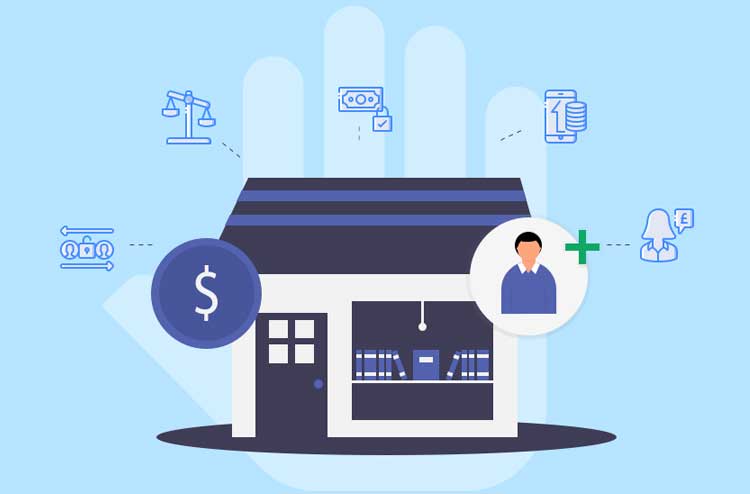A high-risk merchant service can help you enhance your business. Like all other businesses, high-risk merchants must have a merchant account to take credit card payments. Banks set stricter restrictions and higher fees on accounts for these firms due to the increased risk involved in processing payments for them.
High-Risk Merchant Service: Clear Your Doubts
Unfortunately, these kinds of accounts can put the merchants at a disadvantage if rivals successfully obtain funds on more enticing terms. Additionally, the increased fees and other expenditures connected with these accounts restrict cash flow and make it harder for the merchant to do business.
Despite their disadvantages, the great news is that these services allow merchants to accept a widely used form of payment, enhancing their capacity to pull in new clients, keep current ones, and boost sales. Many businesses would struggle to continue operating if they could not accept credit card payments.
Some businesses specialize in assisting merchants in obtaining and maintaining accounts for payment processing with the best conditions. Another piece of good news is that many retailers have some degree of control over their capacity to exhibit lower risk levels and, as a result, have account fees and conditions lowered.
Companies are categorized as high risk for processing credit cards by banks because they are likely to engage in fraud, have a large volume of chargebacks, have shaky financial standing, or work in a dangerous industry. In light of this, actions you may do to improve your account and lessen the risk associated with your company include:
- Ensure that your systems and practices for storing and sending digital data, like credit card details, are PCI-compliant.
- Install, patch, and keep antivirus and malicious programs up to date.
- Make returns and refund procedures transparent, fair, and simple to locate.
- Make sure your brand and business description is the same so that customers will instantly remember your brand and the contact details that display on a customer’s credit card statement.
- Make sure that the details of your transaction on credit card bills are precise; this will help the consumer remember what precisely it was that they bought.
- To account for an accounts reserve fund requirement, include cash reserves in overall financial planning.
- Train the workers at physical stores to see the telltale signals of fraudulent credit card transactions, such as rushing to make orders just before closing time or pulling a credit card out of a pocket instead of a wallet or pocketbook.
- Resolve lingering concerns with your personal and business credit reports.
Here, it is vital to make a few warnings.
- First, it takes time for banks to respond to the steps above. Before taking action to change the conditions or fees associated with an account, financial institutions need to see improvements made and maintained over many months.
- Second, even if your company’s risk mitigation measures are higher than the industry standard, your firm will still be considered dangerous if it operates in a regulated sector (such as the weapons or travel industries) or one that is intrinsically risky.
- Third, even if you take every precaution to reduce risks, you can still end up with a more favorable profile. A low-risk or moderate-risk merchant might get one despite whatever success you may have in decreasing costs and conditions.
Please get in touch with a reliable provider if you want to investigate new payment processing options for your business. Many can guide you toward a better solution since they have years of expertise.
How can I tell whether I need the services of a high-risk card processing firm?
For many reasons, financial institutions classify enterprises as high-risk. If you fall under any of these categories, then you need a high-risk merchant service. Opening a merchant account can be exceedingly challenging if your business falls under these categories.
Industry-related risk: Due to their inherent propensity for fraud and chargebacks, several industries are automatically high risk. In almost every industry where this is true, we provide credit card services processing.
Firm-related risk: Regardless of whether your company is in a high-risk sector, it is likely hazardous if it has a bad credit history. It can also be because it has a high chargeback rate, has suffered fraud, has a large transaction volume, operates in a dangerous area, or has gone bankrupt. The ability to submit a viable account application is among the most crucial aspects of any payment processing for retailers. Before opening an account, banks thoroughly review your financial risk factors.
New business risk: If your company is brand new and you do not have much credit history, you can find it challenging to work with a finance company to process credit cards. Furthermore, if you’re beginning to start, experts will walk you through application forms and assist you in creating a profile with the best terms we can.
What Are a High-Risk Merchant Account’s Rates and Fees?
Most firms may open a payment processor to process payments. However, the rates, costs, and requirements are more significant than those for low- and medium-risk enterprises. Your company will pay extra, but the real issue is how much more.
Because these companies pose a greater risk, card-issuing banks charge these companies extra. It is crucial to remember that the issuing bank must reimburse the amount if a merchant cannot do so due to a cardholder chargeback. Therefore, during the financing of an account application, companies with a greater rate of chargebacks, companies in a sector with a greater rate of chargebacks, companies with a bad credit history or a weak financial groundwork, and companies with a greater vulnerability to deception are all classified as risky.
Finding an average for processing rates is challenging due to numerous factors. The range varies from 2.9% on the low end to 7%–9% for hazardous sectors. The majority of accounts fall between 4% and 6%. These accounts often bear the account setup costs that also pertain to medium- and low-risk accounts in terms of account fees. Due to the more comprehensive underwriting procedure, where underwriters examine your data dating back at least five years, setup costs may be higher.
Maintaining a reserve account is the most critical aspect of an account’s conditions. This account, which is often a rolling reserve, represents 5% to 10% of the charges made on credit cards within 180 days. Having a reserve fund slows down cash flow and may be taxing for the merchant. Additionally, fixed reserve fees restrict how much they may be and the criteria.
These accounts may be subject to several processing fees, just as a conventional account would. Processors collect fees for chargebacks, monthly services, cancellations, etc. It is crucial to remember that many of these processing fees are negotiable and, in some instances, even for high-risk merchants, may be decreased or waived.
Conclusion
For hazardous merchants, weighing multiple offers is very beneficial since different banks and processors have varying degrees of interest in assisting various enterprises. You can trust certain specialists to help you select the most outstanding overall credit card processing solution since they have years of experience working with all the leading account suppliers in every risk category.





